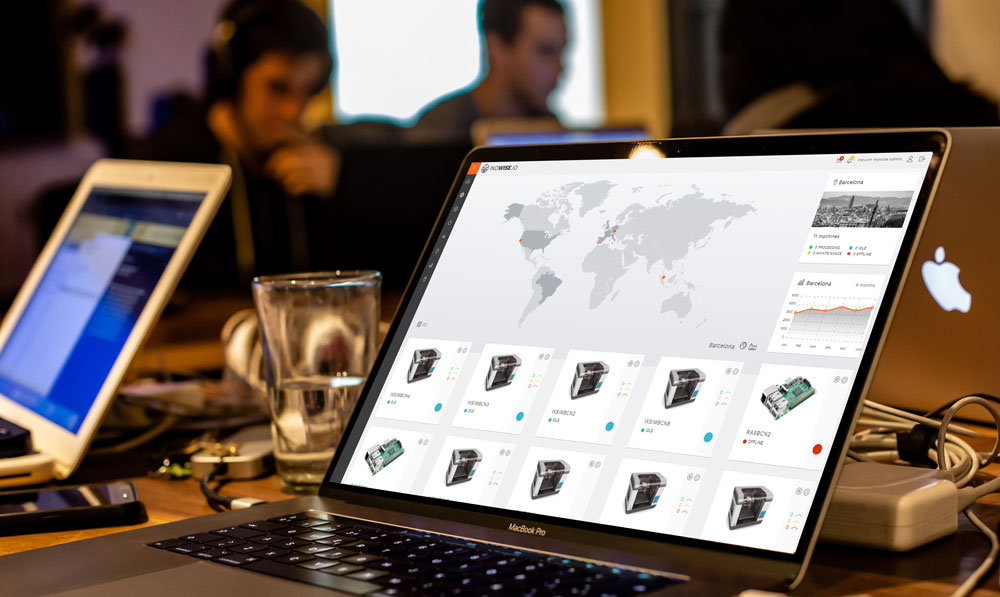Does your enterprise need a boost? Clear your doubts about predictive maintenance!
Are you not entirely sure what predictive maintenance is, how it works and what benefits you can get from it?
Let us help you get a better understanding of why predictive maintenance is becoming more and more popular.
Firstly, if you google predictive maintenance you will find studies claiming that with predictive maintenance you will have significant cost savings, your machines or assets will have a longer lifespan and you can avoid 50% or even 70% of unplanned downtime.
It is true that predictive maintenance has lots of positive effects but there are also a few challenges. Do not expect to see results tomorrow or within the first weeks. Here is why.
First, let us have a look at the type of maintenance you are already using in your business.
Most businesses still use reactive and preventive maintenance, an increasing number of businesses have already switched to condition-based maintenance and some businesses have already taken a step beyond to predictive maintenance.
Reactive maintenance
Reactive maintenance means that you act when there is a problem, for instance, when something breaks or a machine stops working. The advantage of reactive maintenance is that you only spend time and money that is completely necessary. For instance, you are not spending money on changing spare parts that are not essential.
Reactive maintenance does not require you to collect any previous data. No specific tools or software is needed. The downside is that once a machine breaks, there is a high risk of unplanned and longer downtimes. A broken machine or asset can affect other nearby assets. And since unplanned failures need fast fixing, you might have higher repair costs. Not only can production be interrupted, it might also lead to quality problems in production, that is, a machine that is not maintained correctly can cause poor quality over a longer period of time.
Preventive maintenance
A solutions to those problems is preventive maintenance. Preventive maintenance means you have a maintenance plan. For instance, a car should be inspected every 10.000 km or maybe you have a machine that needs to be checked every 6 months.
Condition-based maintenance
The next step you can take is condition-based maintenance. This means, you act according to the conditions of a machine, asset or the environment. You might act when a temperature is too high or the pressure in a pump is too low, etc.
The main question to ask in condition-based maintenance is ‘How is the machine or asset doing?’
Many conditions like humidity, pressure, temperature, CO2 level, noise, irregular vibration, etc. can be checked with sensors. Condition monitoring measures parameters, stores them in a database and analyses the data. Many companies that claim they implement predictive maintenance, actually use condition-based maintenance.
For condition-based maintenance you need sensors. You’ll need to check what sensors are already in your machines and what sensors should be added to make condition monitoring more effective. Then define parameters: What values do I need? E.g. What temperature is too high/too low? Are vibrations irregular?
Predictive maintenance
Predictive maintenance takes the data obtained from condition-based monitoring and takes one step further. Here is how it works:
– asset state and environment are determined (through condition monitoring)
– historical data is collected (e.g. historical failures, operating hours)
– through the analysis of big amounts of data conclusions are drawn and and predictions about future machine behavior can be made (artificial intelligence). That means, based on the development of parameters we may predict when a machine breaks.
In predictive maintenance historical and actual data are combined and analyzed. The main downside to this type of maintenance is that it cannot be done overnight.
Most companies practice preventive maintenance and condition-based maintenance. A switch from condition based to predictive maintenance is not that big of a financial or technical step though since sensors and sensor data are already available.
First, you need to ask the question if those sensors are enough. If not, more sensors need to be added. Second, you need to verify what historical data you already have.
AI algorithms
Predictive maintenance is based on AI algorithms. Those algorithms need a database to learn from. Lots of companies already have a lot of data stored somewhere. This data needs to be collected and organized in a way it can be read by an algorithm.
This kind of data ensures a faster start than if you are starting from 0. Algorithms need to learn. To do that they need lots of data.
If you start without any historical data, it will take months to train an algorithm depending on how many comparative values are available.
For companies who only use preventive maintenance the change to predictive maintenance is slower. They need to get sensors first and define what data needs to be collected. What data format is needed. And the posterior training of an algorithm takes its time.
It is possible to start small though with the implementation of only a few sensors to start testing. That can be done fast and without immense costs to evaluate if it is worth the investment.
Do you need predictive maintenance?
Well, it depends. Do you have critical machines? How high are the maintenance costs currently?
But in general, the answer is yes. Predictive maintenance minimizes downtime significantly, ensures quality of production and on the longer run it will make up for the initial investment.
When can I have predictive maintenance?
You can make tests fast but predictive maintenance takes its time and your employees will need to be trained. For more information contact the Inovum team: info@inowise.io
Boost your business performance with Inowise.io
INOWISE.IO is a smart IoT live asset management platform that helps your business to control and track devices, as well as store and analyze data. For more information visit the Inowise Website.

Comments are closed.